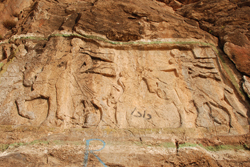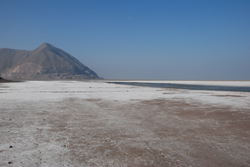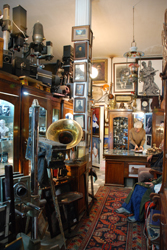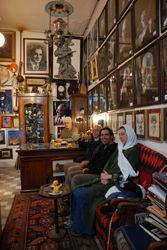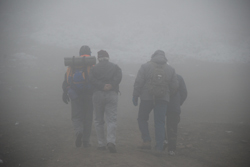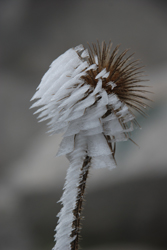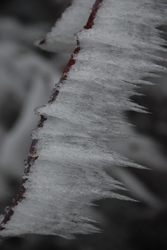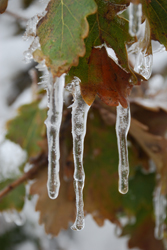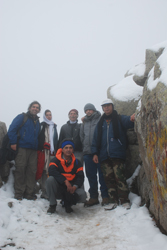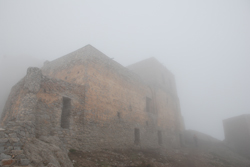Urumiye: City of Exploding Worms
17 November, 2008, 02:21 am in "Iran"
We drove to Urumiye, the capital of Iran's West Azerbaijan across a large lake from Tabriz which is the capital of the East Azerbaijan, to visit an aunt and uncle of Rowshan's.
On the way, I noticed an interesting rock carving in the hills and insisted. R's father stopped the car and Rowshan and I walked over to a rocky hill. There was an old looking carving of Persian horsemen.
After lunch, Rowshan's cousin drove us down to the river. He told us how Urumiye was the town's 3rd name. The second, Rezaiye, after a Shah had been changed after the revolution. The first was Chichest. The current name, Urumiye, is named for worms that live in the lake. The worms change size depending on the salinity. When the salinity is low, the worms shrink. When it is high, they swell up until they explode. Now the salinity is so high, the worms are dying out (images of thousands of exploding worms). Aside from the usual ecological consequences such as the animals who feed on them not having food and any other roles they play in the environment being effected, researchers had also been studying them as a possible cure for cancer.
Tabriz: A Step Back in Time
15 November, 2008, 02:21 am in "Iran"
Rowshan's dad took us to visit a friend of his who is a photographer, Jaidol Eslam. His studio was in a typical brick building downtown. However, when we entered the studio it was like stepping into a different era. The main room was small but filled with antique cameras and photographic equipment-- most displayed in antique wooden cabinets with glass fronts and shelves. One wall was full of poster sized black and white portraits of famous Azeri artists, writers, and musicians, including Rowshan's dad.
He was playing a recording of old Iranian music. On the floor and furniture were antique kilims. The furniture itself was also antique. I sat facing a gramophone with a large horn. There was also an arrangement of musical instruments on the wall. Jaidol studied art in Tehran but in 1958 there was a “cultural revolution” and music and art were prohibited. He returned to Tabriz and eventually got a job teaching at the university. Perhaps this contributed to his desire to preserve culture and art. Aside from his camera collection, he also collects old photos of Iran's people and places and has walls of paintings in the other rooms of his studio (I just glanced in). He was a courteous gentleman with bright white curly hair-- the prominent feature on several caricatures he had of himself. As he and Rowshan's dad spoke together I could see why Rowshan's dad wants to return to Tabriz. It seems the city hides in inconspicuous corners artists and intellectuals who can escape to a lost time. Now it is replaced by speed of life and noise. The elegance is being lost. Jaidol is trying to get a museum permit and if he can't he plans to sell his collection and travel around the world. Therefor, he was especially interested in our trip.
A Trip to the Fortress of Babak
14 November, 2008, 02:21 am in "Iran"
Rowshan, his father, several cousins and I headed to Kale Babak (Babak's Fortress) early in the morning. It was a drive of several hours through a landscape covered in fog. Through the fog we could see really green hills dotted with rock outcroppings reminiscent of Ireland, along with forests of autumn colored trees casting shadows of gold against the gray. At one point a gray fox with a long tail touched with orange darted across the road then stared at us before disappearing into the fog and fields.
The fortress is in the mountains above a small town but all the mountains were so fogged in we couldn't see anything. We climbed into the mountains and the fog became thicker. At the turn off to the trail head we had to stop and have Murat run up to check if the road was passable. There was a layer of snow and all the plants were covered with ice formations which stretched from the leaves and branches parallel to the ground rather than the more common vertical perpendicular icicles.
We pulled into the parking area and were surprised to see a tour bus pulling out. Perhaps they were staying in the hotel which, if it wasn't for the fog, probably had a very nice view. There were a couple other groups of people hiking as well but they had disappeared up the trail in to the fog before we even started. The first part of the trail was a long stairway occasionally divided around clumps of ice covered trees.
Rowshan's family are a cheerful bunch and occasionally would break out in Azeri folk songs and snippets from operas. At the top of the stairs, we walked along a flat area following a line of electric poles. To our left was a forest of ice covered trees. Surrounding us-- fog fog fog.
We joined a narrow path which was a combination of snow and mud. Then one of Rowshan's relatives insisted we needed to climb up. Up and up we went but could not find any fortress. What through the fog looked like a fortress' ruins turned out to be an outcropping of rocks. We settled down for a tea break with bread and fruit. I was surprised to bump my leg against a snow covered cactus. Once again more songs were sung and a bit of dancing occurred. Deciding it was unwise to wander the mountains side in the fog searching for a fortress which no one knew where it was, we headed back down the hill. Then we heard voices through the fog. We called to them and they told us to come down since they were on the right path.
The correct path was big, well used, and obvious. If we had kept to our original path we would have probably run into it. However we had actually made a mistake earlier when instead of sticking by the electric poles, we had walked closer to the ice forest. The men on the trail told us the fortress was about an hour up. Though thankfully it was a trail, it still was icy, muddy, rocky and sometimes just covered with snow. My new boots performed admirably and kept me from slipping even when I tried to.
We joined a narrow path which was a combination of snow and mud. Then one of Rowshan's relatives insisted we needed to climb up. Up and up we went but could not find any fortress. What through the fog looked like a fortress' ruins turned out to be an outcropping of rocks. We settled down for a tea break with bread and fruit. I was surprised to bump my leg against a snow covered cactus. Once again more songs were sung and a bit of dancing occurred. Deciding it was unwise to wander the mountains side in the fog searching for a fortress which no one knew where it was, we headed back down the hill. Then we heard voices through the fog. We called to them and they told us to come down since they were on the right path.
The correct path was big, well used, and obvious. If we had kept to our original path we would have probably run into it. However we had actually made a mistake earlier when instead of sticking by the electric poles, we had walked closer to the ice forest. The men on the trail told us the fortress was about an hour up. Though thankfully it was a trail, it still was icy, muddy, rocky and sometimes just covered with snow. My new boots performed admirably and kept me from slipping even when I tried to.
Finally we saw what looked like a wall bu was actually stairs to the fortress. Up the stairs we found big rocks. We followed the stairs down and they wound behind the rocks once more becoming icy. We finally came to the ruins of the gate house. Then some of us walked further and up more stairs to the fortress. From the stairs we could just see big rocks but once we got to the top, the fortress, quite a large structure, appeared through the fog like a ghost ship. It had most likely been reconstructed. Still, it was imposing and a lot nicer than piles of mud or a few small remains of walls. From the highest wall, which probably reveals an incredible view when it is clear, we looked down on a mystery of fog.
Powered by My Blog 1.69. Copyright 2003-2006 FuzzyMonkey.net.
Created by the scripting wizards at FuzzyMonkey.net..
(Code modified by Rowshan Dowlatabadi)
Created by the scripting wizards at FuzzyMonkey.net..
(Code modified by Rowshan Dowlatabadi)


